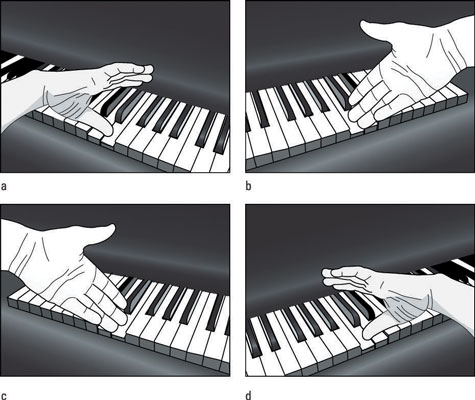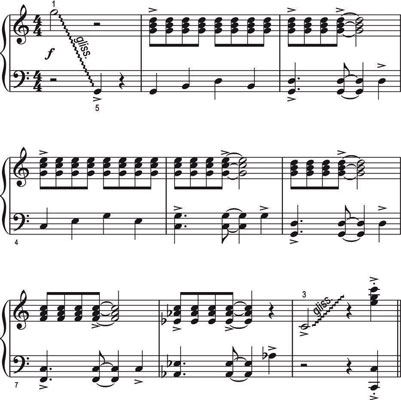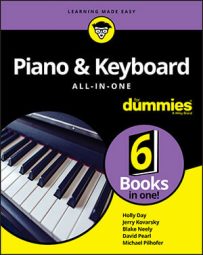A glissando (also known as a gliss in this lazy music industry) is a fast slide across several keys on the keyboard. There’s nothing quite like starting and ending a song with this effect. It will dazzle any audience.
To try a right-hand gliss, put your thumb on a high C note and drag your thumbnail down across the keys very quickly all the way to the bottom of the keyboard. Cool, huh?
This is how composers notate this effect, which is generally with a wavy line and the abbreviation gliss going from the starting note in the direction of the gliss.
For example, if you see a wavy line going up from C, play the note C and slide up the keyboard. Sometimes the specific ending note is shown at the other end of the wavy line; other times, it’s up to you to decide where to stop.

Sometimes the composer specifies both the beginning and ending notes of the gliss — for that, just practice, practice, practice. Starting on a specific note is easy, but stopping on the right note is like trying to stop a car on a dime. Sometimes you can use your other hand to play the final note if it’s not busy playing something else.
Depending on the direction of the gliss and the hand you use, different fingers do the job. Here are the correct hand positions for each glissando:
Downward with right hand: Gliss with the nail of your thumb (RH 1).
Upward with right hand: Gliss with the nail of your middle finger (RH 3) and perhaps a little help from RH 4.
Downward with left hand: Gliss with the nail of your middle finger (LH 3) and perhaps a little help from LH 4.
Upward with left hand: Gliss with the nail of your thumb (LH 1).

After raking your fingers across the keys several times, your fingers may start hurting. If so, you’re using the wrong part of your finger to gliss; when done properly, a glissando shouldn’t hurt. Make sure you’re using your fingernail, and above all, don’t play a gliss with your fingertips. Not only can this cause a blister, but the squeaking sound is worse than nails on a chalkboard.
Try playing a downward and an upward gliss in a Jerry Lee Lewis-inspired number. The effect of a glissando is altogether powerful, energetic, and just plain rocking.


